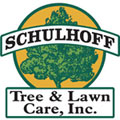As a homeowner, you take great pleasure in caring for your yard. And after many years of pruning shrubs and mowing the lawn, you’ve decided to take the next step: planting fruit trees.
Fruit trees don’t only beautify your property-they also produce delicious fruit throughout the year for your family to sell or enjoy. However, if you’ve never grown fruit trees before, you might not know just where to start.
In our blog below, we’ll overview common fruit tree varieties that first-time growers will love. If you have any questions by the time you finish reading, your local arborist will more than happily answer them.
Common Colorado Fruit Trees
If you garden at Colorado’s high altitudes, you already understand some of the key challenges to your fruit trees’ growth. For instance, you’ll want to choose hardy, sturdy trees that can last with thinner air, brighter sunlight, and fluctuating mountain temperatures all year long.
Fortunately, most fruit trees prefer bright, full sun to grow. And with the exception of peach trees, the fruit trees below can endure temperatures of up to negative 25 degrees Fahrenheit. Read on to learn about common varieties of popular Colorado fruit trees:
Apple Trees
Colorado gardeners can grow a variety of hardy apple trees. If you choose to grow apple trees, though, you should know about fire blight, a bacterium that destroys certain apple and pear varieties. Talk to your arborist about fire blight control possibilities and choose your favorite taste from the ones below:
- Golden Delicious: A popular fall apple with a crisp taste. This type of apple tree bears fruit earlier than most.
- Jonathan: A crisp, medium-sized apple with a good balance between tart and sweet. Jonathan apples are more susceptible to fire blight than many other varieties.
- McIntosh: An all-purpose red apple with smooth red skin and a sweet taste.
Cherry Trees
Tart cherry trees can do quite well in Colorado gardens. Sweet cherry trees can flourish occasionally, especially in the western part of the state, but if you plant sweet cherry trees, know that you’ll likely lose one or two every few years. And when you plant cherry trees, look out for destructive pests like cherry slugs and peach tree borers.
Your cherry tree options include:
- North Star: A bold, red cherry with a sour flavor. Most gardeners use North Star cherries for pies, tarts, and other desserts.
- Stella: A self-pollinating cherry tree that can outlast Colorado’s winters.
Peach Trees
Because of their susceptibility to frost, peach trees don’t endure Colorado conditions as well as apple or cherry trees. They flower early in the year, which can present problems in a long winter or in fluctuating spring temperatures. However, if you have a warmer winter or can overcome early frost challenges, your difficult tree will yield a delicious reward.
Many gardeners choose peach trees from these varieties:
- Elberta: The most popular peach variety, especially for commercial growers. These trees are relatively hardy and often survive Colorado’s winters with good care.
- Reliance: The hardiest peach tree variety. These trees can grow as far north as Canada, which makes them a good choice for Colorado growers.
Plum Trees
If you want an easy tree with delicious fruit, choose plum trees. American varieties flourish in Colorado’s notoriously fickle conditions and endure the cold winters well. Your options include:
- Blue Damson: A self-pollinating, early-blossoming plum with a succulent flavor.
- Mount Royal: A purple plum that bears fruit starting in the middle of August.
- Waneta: A Japanese-American cross that has flourished in Colorado since the early 1900s. These trees produce dependable fruit year after year-so much fruit that you’ll have to watch the branches and thin as needed.
Shrubs
In many cases, beginning gardeners have an easier time taking care of shrubs over trees. Plus, shrubs often handle Colorado’s fluctuating temperatures better than species like peaches. You can also grow shrubs like the following in poorer soil than you can do with the trees above.
If you don’t want to try your hand at fruit trees quite yet, or if you want to complement your fruit trees with some tasty shrub fruits, try one of the following plants:
- Currants: While you can occasionally coax Alpine or Golden currants to grow in Colorado weather, Red Lake shrubs have the highest chance of success. Plus, the berries are sweet enough that you can eat them without cooking.
- Gooseberries: The Invicta variety produces large berries that you can pick and eat right off the branch. The Welcome gooseberry variety also produces large berries with few thorns.
- Jostaberries: This recent, complex cross mixes black currants with gooseberries. You might have a harder time tracking it down (try mail-order catalogues or ask a local nursery), but if you can find the plant, you’ll enjoy tasty, rich, full berries.
Talk to Your Arborist
Now that you know which fruit trees to choose from, talk to your local arborist. He or she can help you make decisions about which trees to plant and give you area-specific advice on how to care for them.
